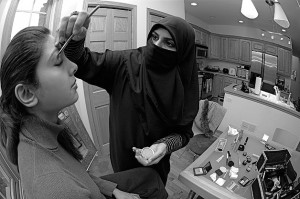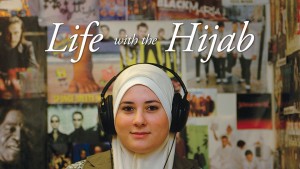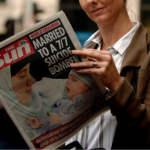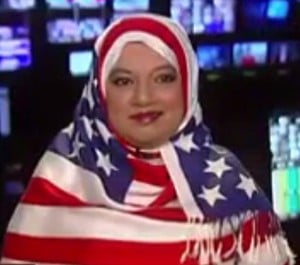During a period of time right after my conversion to Islam, I contemplated the idea of wearing hijab. I rushed off to several stores and bought a giant scarf collection that now sits in my dresser. I experimented with the veil, and I was basically a weekend hijabi (I wore it to go to the mosque and to hang out with my Muslim friends). I even tried out niqab after a friend convinced me of wearing it to go shopping. Later on, I decided that neither hijab nor niqab were going to work out for me… In the first place I had a non-Muslim family in Canada who, being immigrants, were trying hard to somehow preserve our Mexican identity (hijab didn’t figure in there). Then, I had the family in Mexico who did not understand my conversion and any physical attribute would have been a point of contention.
Despite many of my fellow Muslim friends’ disapproval, I decided that as a Mexican convert in a Western country I was not ready to commit to this piece of cloth everyone was talking about. Yet, I saw several friends, converts and otherwise, transition from no hijab to all sorts of hijab styles and niqabs. In many cases, hijab and niqab are central to Muslim women’s lives, whether it is for religious, political or personal reasons. And as much as we discuss the rights or wrongs of women who wear hijabs and niqabs, it must be recognized that choosing to wear such a garment is not easy.
For one, there is the post- 9/11 baggage. In my community niqabis were often the target of assaults and insults; a few of them wouldn’t be let on the bus by the drivers, others were called names in the street. A dear niqabi friend was walking once to the mosque when a white man yelled at her: “We are going to crash your buildings’ towers like you crashed America’s.” Two months later, my friend, an Education student, couldn’t keep the niqab as no one in childcare would hire her.

Hijabs and niqabs have become symbols of topics that are discussed by everyone, defended by many and understood by few. One just has to glance through a news feed to realize that the veil is everywhere, but there is little understanding of it. From people who think that wearing a hat is the same as a hijab to Islamic schools forcing non-Muslim teachers to wear “Muslim clothing,” portrayals of Muslims (men and women) worldwide are associated with hijabs or niqabs regardless of what these people’s views on the garments are. Few of us are surprised at the fact that Muslim women who wear it have been denied jobs in recent months. Furthermore, we continue to see the niqab issue in the court room, the most recent example being a British woman who has been told she can’t testify with it.
Nonetheless, it is not only an external thing (i.e. media and non-Muslims), many Muslims themselves often see clothing as a symbol of their faith and emphasize it in various contexts. For instance, some schools in the UK require students to wear niqabs as a “uniform.” Another example can be seen in MMW’s Nicole Hunter Mostafa’s recent piece on the Miss World Muslimah Pageant, which capitalized on the idea that long sleeves and hijabs guaranteed a woman’s inner beauty to compete rather than her physical attributes…does it really? That, it seems to me, should be up for debate.
While the world flips up-side-down over some Muslim women’s wardrobe, there has been very few attempts to actually understand the contexts in which the hijab and niqab are worn, the importance of these garments for the women who wear them and the role of cultural and religious sensivity in effective policy making. Interviewing a few women who wear the veil invites us to read their stories and pretend we understand, but the reality is that it is not easy for women who choose to wear hijabs and niqabs in most Western countries. In between Islamophobia, anti-Muslim policies, Muslim groups forcing “modest” clothing on women and using hijab as a kind of national symbol, and the rest of us observing without much resistance, little is going to change for Muslim women living in Western societies.













